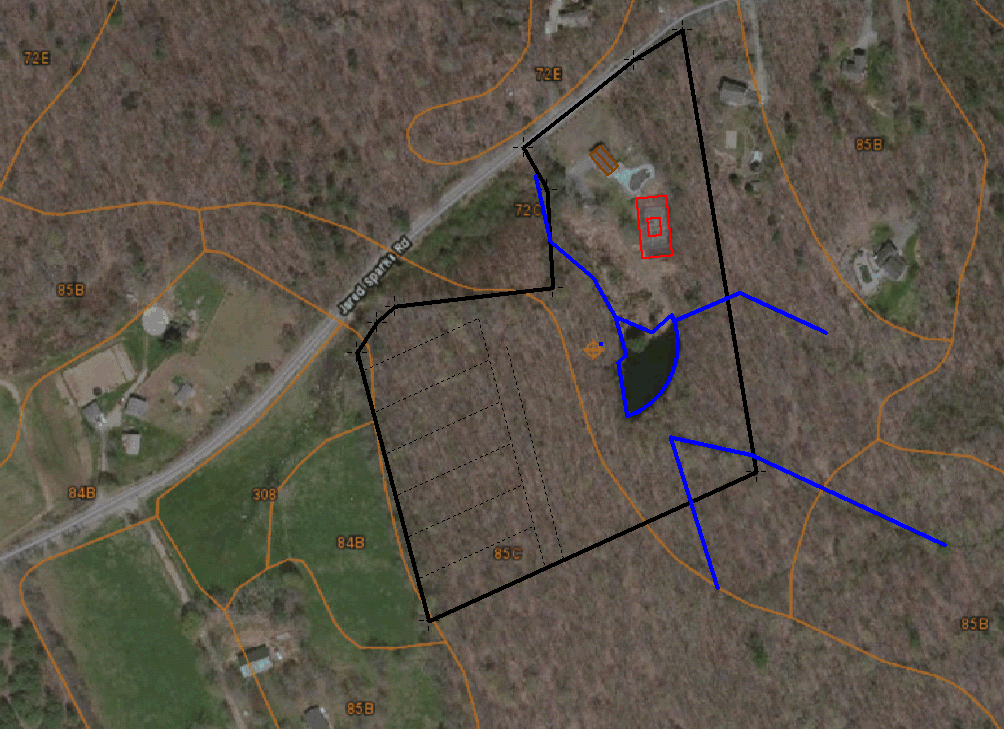





 1
1




How Permies works: https://permies.com/wiki/34193/permies-works-links-threads
My projects on Skye: The tree field, Growing and landracing, perennial polycultures, "Don't dream it - be it! "
 9
9








Skyler Weber wrote:Did you have any specific goals for the property? So I am guessing you are posting this here so you can get some feedback on the range of possibilities available. Here are my observations
-#1. Water: 14 inches of rain and zone 7 means you need to focus on maximizing water.
-Darn it seems you just missed that arroyo to your south and your neighbor got it. That and the rocky soil probably will preclude you from a pond. So I would go with swales.
-Both Agave and Amalia seem to have a slope and could have a roll out berms installed if you get approval from the neighbors. So, this technique was described by Brad Lancaster and is basically putting a short, wide, and diagonal speed bump (made of dirt) on road to funnel water off the road. It needs to be wide so it doesn't break any cars. In fact, it will be like a small gentle rise in the road. This should be placed as high on the road as possible to direct the water at the first opportunity back onto your land. Secondly, this method prevents erosion of dirt roads for the long term, so that's how you could sell it to the neighbors.
-Sounds like you have a lot of rock. So put it to use first with one-rock dams. Construction of the one-rock dam is described by the Quivira Coalition https://quiviracoalition.org/category/technical-guides/one-rock-dam/. This will collect fine sediment to begin later plantings. These dams are easy to emplace and you can do them every 20-30 feet. Each dam can be a planting area.
-you seem to be rich in juniper. Put it to use. Prune the bottoms of the tree and use the cuttings to mulch your tree starts. Juniper duff also makes perfect mulch as it doesn't absorb water, and allows even minor rain showers to go down into the soil.
-Leave the junipers until your own trees are well established and at the same height. That could take a while. At this time they are providing windbreak and temperature buffering. Chickens also love to roost around them. Don't worry about swaling close to the junipers - you can rip up their roots all day and heavily prune them and those trees keep surviving,
-Find seedling junipers under the adults and transplant them to the edge of your property to make a windbreak. That's whatever edge the prevaling winds come from. For me in Southern Colorado, that's southwest. You can also transplant cholla cactus into the windbreak as they grow tall. Cholla planting is as easy as chopping the cactus into lengths and then throwing them on the ground. You can also make a brush wall out of juniper cuttings though the neighbors might object. See this case study for windbreaks in New Mexico https://www.harvestingrainwater.com/case-study/snow-wind-harvesting-case-study/
-Look around your area for trees that are growing well and collect their seeds. Then sow the seeds at all times of year into your swales, and dams.
-Tree list for this area: Nuts - pistachio, almond, arizona walnut, pinyon pine, pecan. Fruit - jujube, elderberry, apricot, goji/wolfberry, raspberry, blackberry, prickly pear. Nitrogen fixers - black locust, honey locust, russian olive, false indigo, desert mahogany, apache plume, New Mexico locust. Fast growing shade trees - siberian elm, black locust, and tree of heaven (note this tree is alleopathic and doesn't play well with others)




When in doubt, doubt the doubt.

|
You've gotta fight it! Don't give in! Read this tiny ad:
The new purple deck of permaculture playing cards
https://www.kickstarter.com/projects/paulwheaton/garden-cards
|



